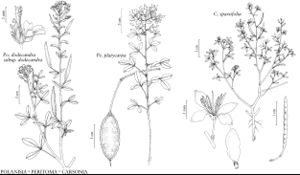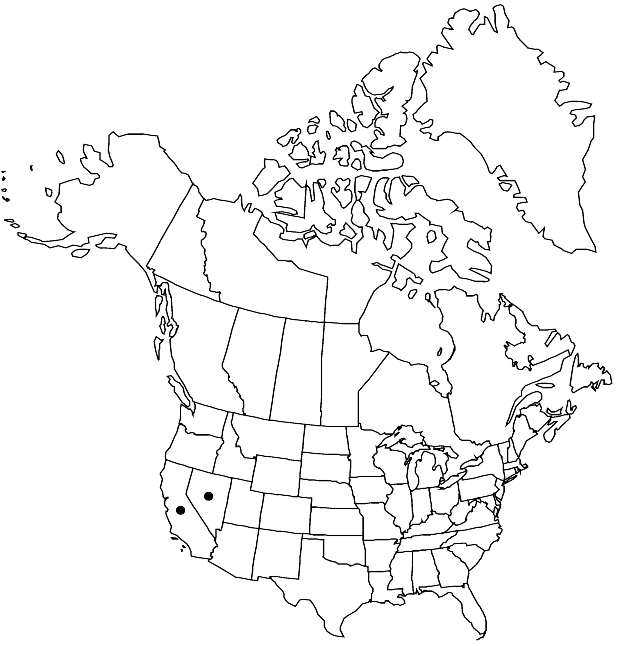Difference between revisions of "Carsonia sparsifolia"
Pittonia 4: 212. 1900.
Basionym: Cleome sparsifolia S. Watson Botany (Fortieth Parallel), 32, plate 5. 1871
Treatment appears in FNA Volume 7. Treatment on page 209.
FNA>Volume Importer |
FNA>Volume Importer |
||
| Line 7: | Line 7: | ||
|year=1900 | |year=1900 | ||
}} | }} | ||
| − | |basionyms={{Treatment/ID/ | + | |basionyms={{Treatment/ID/Basionym |
|name=Cleome sparsifolia | |name=Cleome sparsifolia | ||
|authority=S. Watson | |authority=S. Watson | ||
| + | |publication_title=Botany (Fortieth Parallel), | ||
| + | |publication_place=32, plate 5. 1871 | ||
}} | }} | ||
|synonyms= | |synonyms= | ||
| Line 49: | Line 51: | ||
|publication year=1900 | |publication year=1900 | ||
|special status= | |special status= | ||
| − | |source xml=https://jpend@bitbucket.org/aafc-mbb/fna-data-curation.git/src/ | + | |source xml=https://jpend@bitbucket.org/aafc-mbb/fna-data-curation.git/src/f6b125a955440c0872999024f038d74684f65921/coarse_grained_fna_xml/V7/V7_281.xml |
|genus=Carsonia | |genus=Carsonia | ||
|species=Carsonia sparsifolia | |species=Carsonia sparsifolia | ||
Revision as of 20:21, 24 September 2019
Plants 10–60(–90) cm. Stems glaucous. Leaves: petiole 4–15(–30) cm; leaflets 3 proximally, 1 distally, blade obovate, 4–15 × 0.1–7 mm, margins serrate, apex acute to obtuse. Racemes 2–8 cm (3–10 cm in fruit); bracts (expanded) unifoliate or trifoliate, 4–15 mm. Pedicels 4–8 mm. Flowers: sepals brownish green, ovate, 1.4–2.5(–3) × 1–2 mm, base cuneate, margins serrulate, apex acuminate, glabrous; petals recurved, yellow with brown central streak, strap-shaped, 9–13 × 1.5–3 mm; stamens staggered, yellow, 9–15 mm; anthers 3–5 mm; gynophore 2–5 mm in fruit; ovary 4–7 mm; style 0.1–0.4 mm. Capsules 15–45 × 1–3 mm, smooth. Seeds silver-gray, compressed, 2–3 × 1–1.5 mm, smooth. 2n = 32.
Phenology: Flowering spring–summer.
Habitat: Sand dunes, beaches, desert valleys, typically with Larrea divaricata and Artemisia species
Elevation: 900-2000 m
Discussion
Selected References
None.
Lower Taxa
None.

